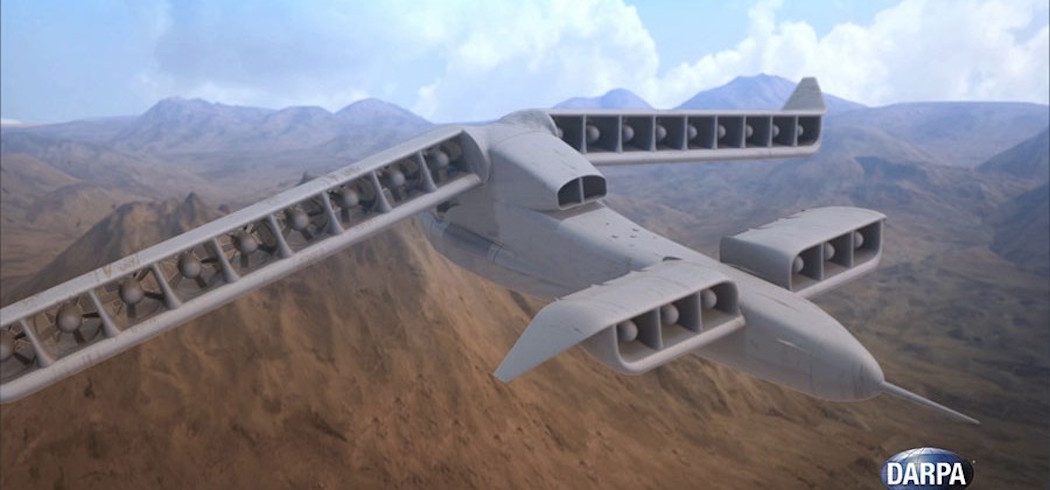
DARPAPlans
DARPA has an ambitious project in the pipeline—the development of an unmanned aircraft that can combine the advantages of a helicopter with the best features of a fixed wing aircraft.
The program is called the VTOL X-Plan,e and while the plans for the technology seem daunting, it seems the initiative is moving forward, as DARPA has just announced that they are now moving into the second phase of design—with the contract being awarded to Aurora Flight Sciences.

“Just when we thought it had all been done before, the Aurora team found room for invention—truly new elements of engineering and technology that show enormous promise for demonstration on actual flight vehicles. This is an extremely novel approach,” said Ashish Bagai, DARPA program manager.
“It will be very challenging to demonstrate, but it has the potential to move the technology needle the farthest and provide some of the greatest spinoff opportunities for other vertical flight and aviation products.”
VTOL X-Plane
The VTOL X-plane is intended to fly at impressive speeds—somewhere in the 300 to 400 knot range. On their website, DARPA announces they’re also eyeing to raise a number of aircraft specs. They assert that they want to “increase hover efficiency from 60 percent to (at least) 75 percent, present a more favorable cruise lift-to-drag ratio of at least 10, and carry a useful load of at least 40 percent of the vehicle’s projected gross weight of 10,000-12,000 pounds.”
All these features combine to create an aircraft that could fly at unprecedented speeds and distances, hover when needed, and be able to carry out varying missions of different complexities, even without prepared landing areas at its disposal.
This design is only possible because of the advancements in flight technology over the last 60 years, and it hopes to address longstanding technical issues, such as the hovering capability.

“This VTOL X-plane won’t be in volume production in the next few years but is important for the future capabilities it could enable,” Bagai said. “Imagine electric aircraft that are more quiet, fuel-efficient and adaptable and are capable of runway-independent operations. We want to open up whole new design and mission spaces freed from prior constraints, and enable new VTOL aircraft systems and subsystems.”
The program is currently targeting 2018 to begin flight tests.